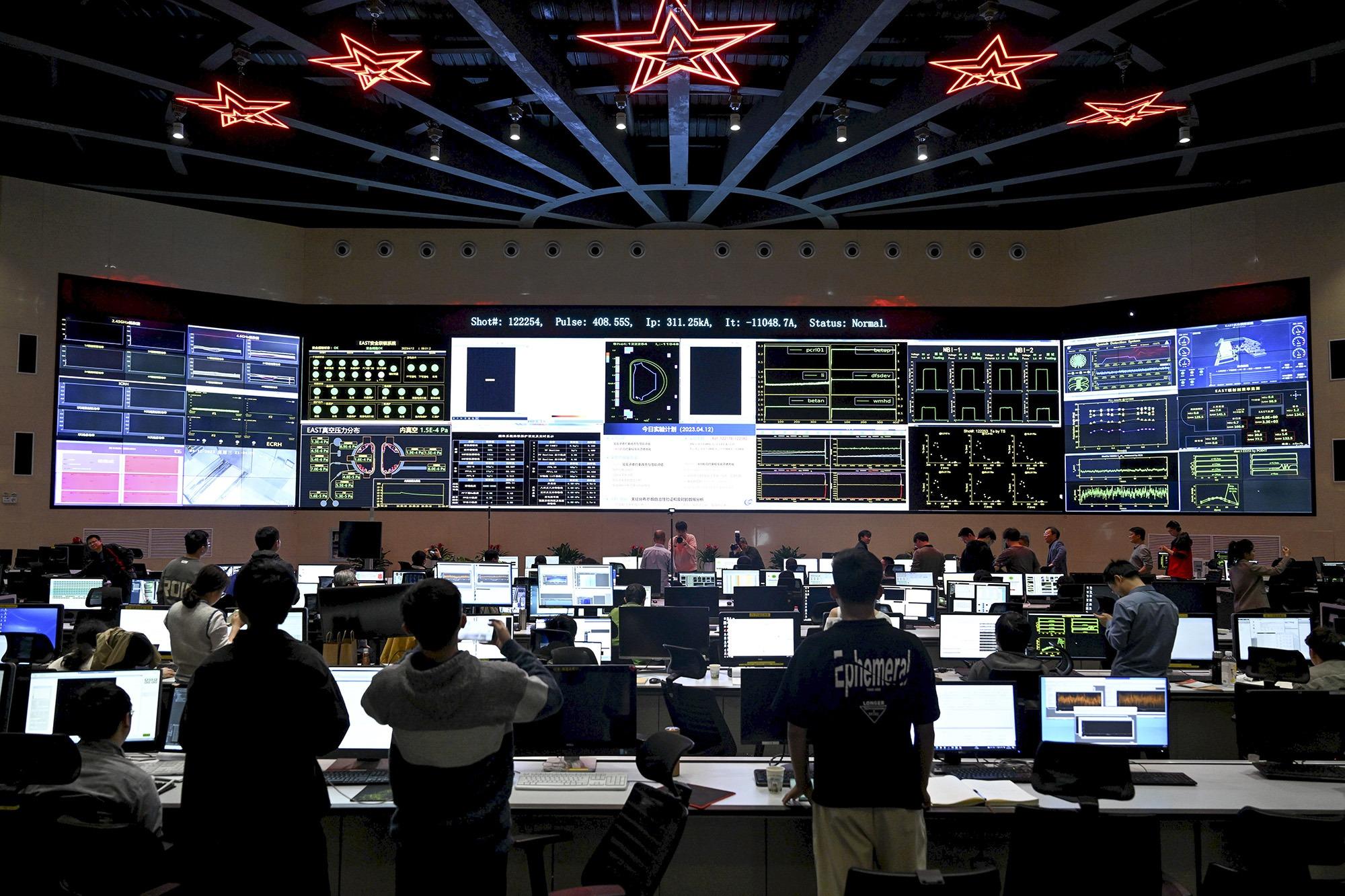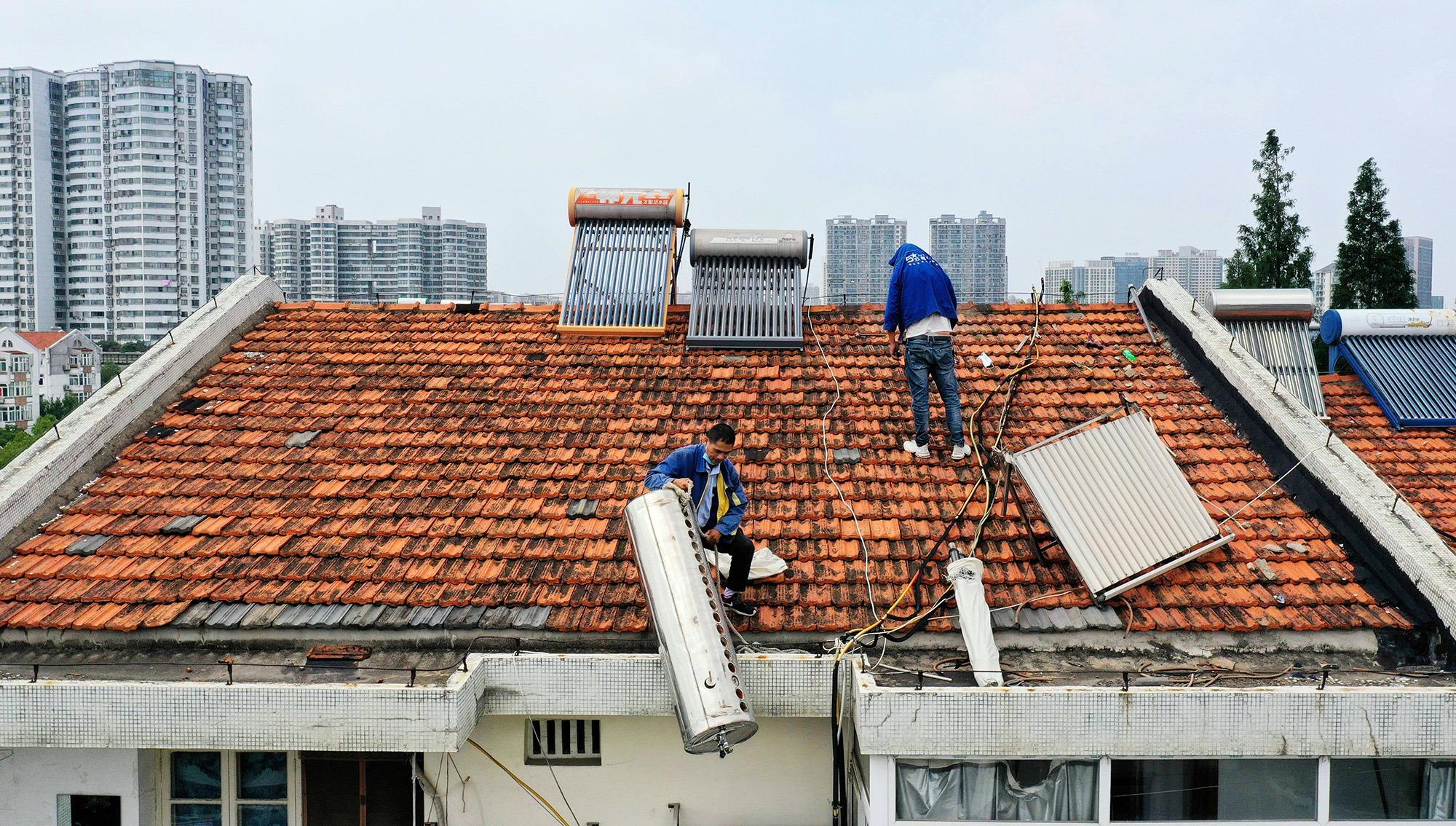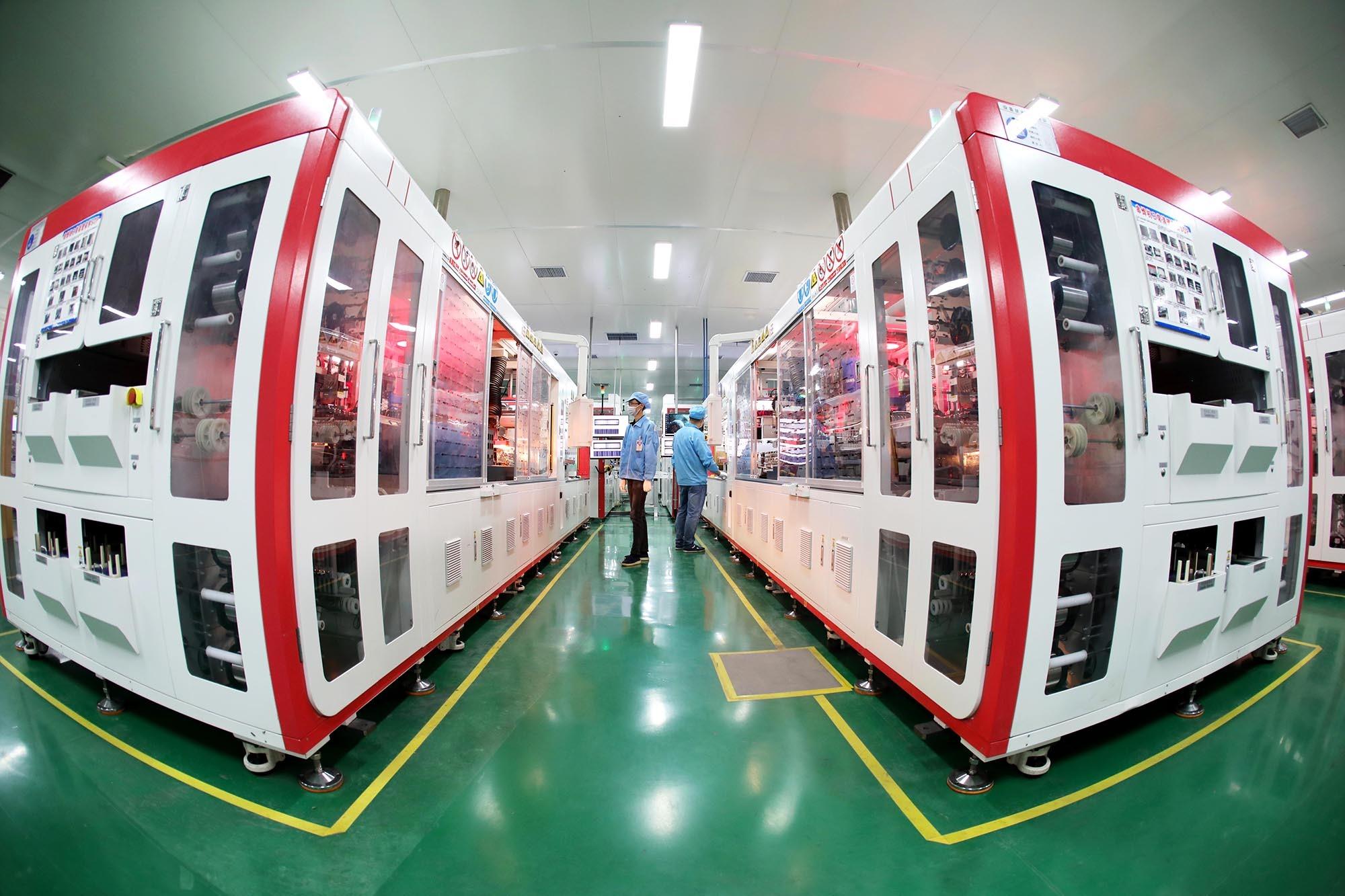A center of innovation in East China is producing world-leading technological breakthroughs. Zhu Lixin reports in Hefei.
 Scientists work in the control room of China's Experimental Advanced Superconducting Tokamak, or "artificial sun", in Hefei, Anhui province, on April 12, 2023.(PHOTO / XINHUA)
Scientists work in the control room of China's Experimental Advanced Superconducting Tokamak, or "artificial sun", in Hefei, Anhui province, on April 12, 2023.(PHOTO / XINHUA)
Earlier this year, China's "artificial sun", an experimental device designed to harness the energy of nuclear fusion, achieved a major technological breakthrough that laid a solid foundation toward the operation of a fusion reactor.
"The Experimental Advanced Superconducting Tokamak — aka EAST, or the 'artificial sun' — aims to unlock the secret behind nuclear fusion; the same mechanism that powers the sun," said Hu Jiahui, an engineer with the Institute of Plasma Physics at the Chinese Academy of Sciences.
The energy released during the fusion of the deuterium contained in a liter of seawater is equivalent to the energy in 300 liters of gasoline.
Hu Jiahui, engineer with the Institute of Plasma Physics at the Chinese Academy of Sciences
The instrument, located at "Science Island", a complex in Hefei, capital of the eastern province of Anhui, has set numerous world records in nuclear fusion technology.
The giant machine simulates the conditions for nuclear fusion in the sun by creating ultra-high-temperature plasma, the most abundant form of ordinary matter in the universe. "The plasma temperature of the machine can reach 160 million C. By contrast, the core temperature of the sun is about 15 million C," Hu said.
Unlike fossil fuels such as coal, oil and natural gas, which are limited in supply and can have damaging environmental impacts, supplies of the raw materials needed for the operation of the "artificial sun" — tritium and deuterium — are almost unlimited in the world's oceans.
"The energy released during the fusion of the deuterium contained in a liter of seawater is equivalent to the energy in 300 liters of gasoline," Hu said, adding that fusion energy is safer and cleaner than traditional energy sources, and is thus considered the ideal "ultimate energy" for the future of humanity.
 A view of the experimental advanced superconducting tokamak (EAST), or the Chinese "artificial sun", in Hefei. (PHOTO / XINHUA)
A view of the experimental advanced superconducting tokamak (EAST), or the Chinese "artificial sun", in Hefei. (PHOTO / XINHUA)
EAST, designed and constructed by Chinese scientists, makes China the first country to build such a device on its own. While it may still take years for people to use the energy produced by the facility, some technological improvements have already brought green energy into people's everyday lives.
In April last year, residents of the Taoxi New Village Community in Hefei's Changfeng county began using electricity produced by solar power from photovoltaic panels installed on the roofs of local buildings, which provide a steady stream of clean electricity.
Zhang Ming, general manager of Wanneng Changfeng New Energy, the company that oversees the installation, said the new energy project generates 1 million kilowatt-hours of electricity every year, which helps reduce carbon dioxide emissions by about 1,000 metric tons, equal to the amount of the gas absorbed by over 50,000 trees a year.
The energy produced by the PV panels is enough to meet the needs of the community's residents, with any surplus power generated fed into the public grid, which helps alleviate the pressure on the network during periods of peak power consumption, Zhang said.
Hu Weifeng, a community resident, said: "In the past, we used an old-fashioned solar water heater, which could only provide hot water in summer, while water leaks used to be a headache for those living on the higher floors. Now, with the new solar panels, we can use safe, affordable green electricity every day."
According to a report released last year by the National Development and Reform Commission and the APEC China Business Council, the global cost of solar photovoltaic power in 2021 was 82 percent lower than in 2010 as a result of China's progress in the field.
At the School of Chemistry and Materials Science of the University of Science and Technology of China in Hefei, researchers have been researching perovskite solar panels, a perovskite is a type of inexpensive solar cell that usually has a hybrid organic-inorganic lead or tin halide-based material as the light-harvesting active layer, which can greatly increase the conversion efficiency of sunlight into electricity.
"The perovskite layer, which is only 1 micrometer thick, is like a 'skin' on the 'apple' of crystalline silicon, the dominant semiconducting material used in photovoltaic technology, which is about 200 micrometers thick," said Xu Jixian, a professor at the school.
As a cutting-edge technology in solar power generation, the perovskite solar cell has greatly boosted the light-electricity conversion efficiency rate from 25 percent to more than 30 percent, said Xu, adding that the figure was just 3.8 percent in 2009.
New energy is just one example of what Anhui, an emerging innovation center, has achieved in recent years. Having been overshadowed by the coastal regions for decades, the inland province is now emerging at the forefront of technological innovation by achieving breakthroughs in many fields, including artificial intelligence, quantum computing and other "future industries."
 Workers dismantle a discarded solar water heater on a rooftop in Hefei, Anhui province, in 2020. (CHEN SANHU / FOR CHINA DAILY)
Workers dismantle a discarded solar water heater on a rooftop in Hefei, Anhui province, in 2020. (CHEN SANHU / FOR CHINA DAILY)
Center of innovation
The province aims to build China's own global technology and innovation center for modern industrial development. Jointly founded by the University of Science and Technology of China in Hefei, the Anhui provincial government and the Hefei municipal government, the center — known as USTC Innovation Valley — was established in Anhui's capital last year. The co-founders will invest in and support global talents to incubate tech breakthroughs at the center.
On Aug 4, the first group of 25 global partners signed contracts with USTC Innovation Valley, aiming to "build an innovation system where scientists can do research and development, incubate ideas into a business, find partners, start companies and cooperate with industrial chain providers — all in a single building", said Wu Huilong, chairman of the valley's service platform company.
 Employees work on a production line of photovoltaic components in a factory in Huaibei on July 22, 2023. (LI XIN / FOR CHINA DAILY)
Employees work on a production line of photovoltaic components in a factory in Huaibei on July 22, 2023. (LI XIN / FOR CHINA DAILY)
By 2025, the facility is expected to host more than 100,000 high-level talents from across the world and nurture 1,000 high-tech enterprises. Anhui is betting big on strategic, emerging industries for long-term innovative development. The provincial government outlined several future industries, including new energy, in its development plan for its 14th Five-Year Plan (2021-25).
The province also aims to raise the share of nonfossil fuels in total energy consumption to 15.5 percent by 2025, from 9.7 percent in 2020, by accelerating the application of renewable sources, such as solar, wind and biomass.
The new energy transition of Anhui is the epitome of China's endeavors to achieve low-carbon, sustainable development. In 2020, the country pledged to peak carbon emissions before 2030 and achieve carbon neutrality by 2060. In recent years, China's climate-change-oriented green economy has been developing at a rapid pace.
 Staff members assemble a charging pile for new energy vehicles in a factory in Hefei on Oct 13, 2023. (RUAN XUEFENG / FOR CHINA DAILY)
Staff members assemble a charging pile for new energy vehicles in a factory in Hefei on Oct 13, 2023. (RUAN XUEFENG / FOR CHINA DAILY)
This year, the nation achieved a milestone when its installed capacity of nonfossil energy power generation exceeded 50 percent of the total, beating the original target of surpassing fossil fuel capacity with renewable energy by 2025.
From 2012 to last year, the share of clean energy sources in the country's total energy consumption rose from 14.5 percent to 25.9 percent.
By the end of the first quarter, China's utility-scale solar capacity reached 228 gigawatts, more than the rest of the world combined.
In terms of pushing ahead with green and low-carbon development "China is acting in a much more determined way than any other country," said Erik Solheim, former executive director of the United Nations Environment Programme. "In the environmental area, China has moved from someone sitting in the back seat into a leader."
Contact the writer at zhulixin@chinadaily.com.cn


